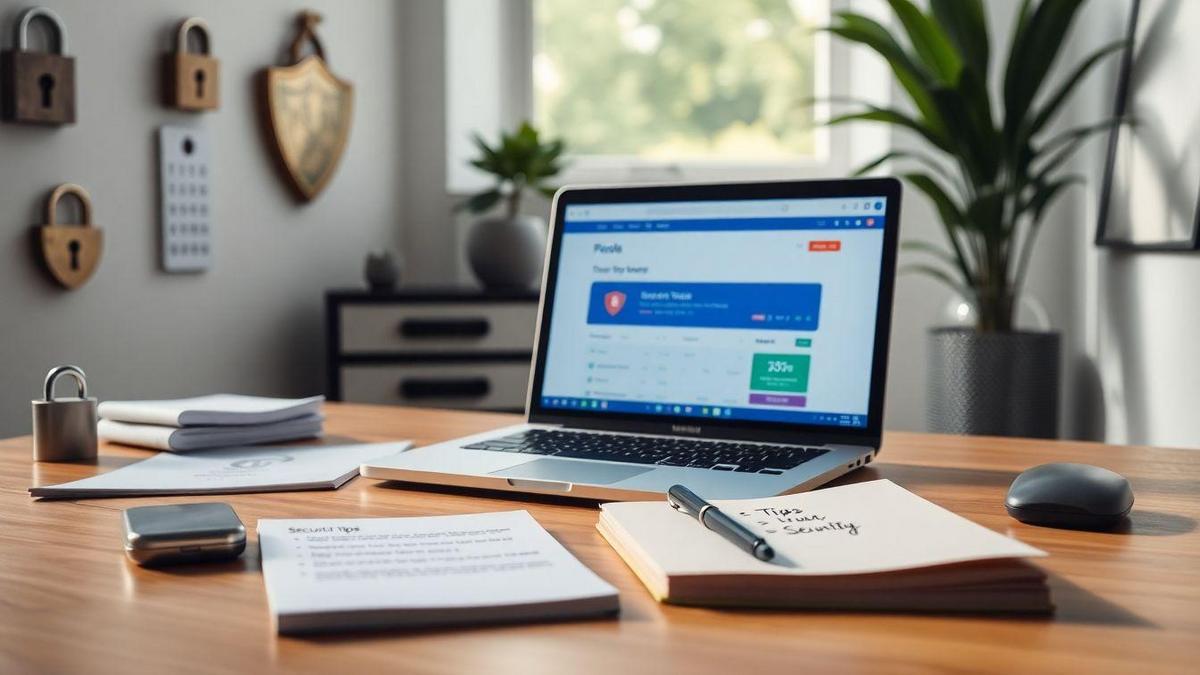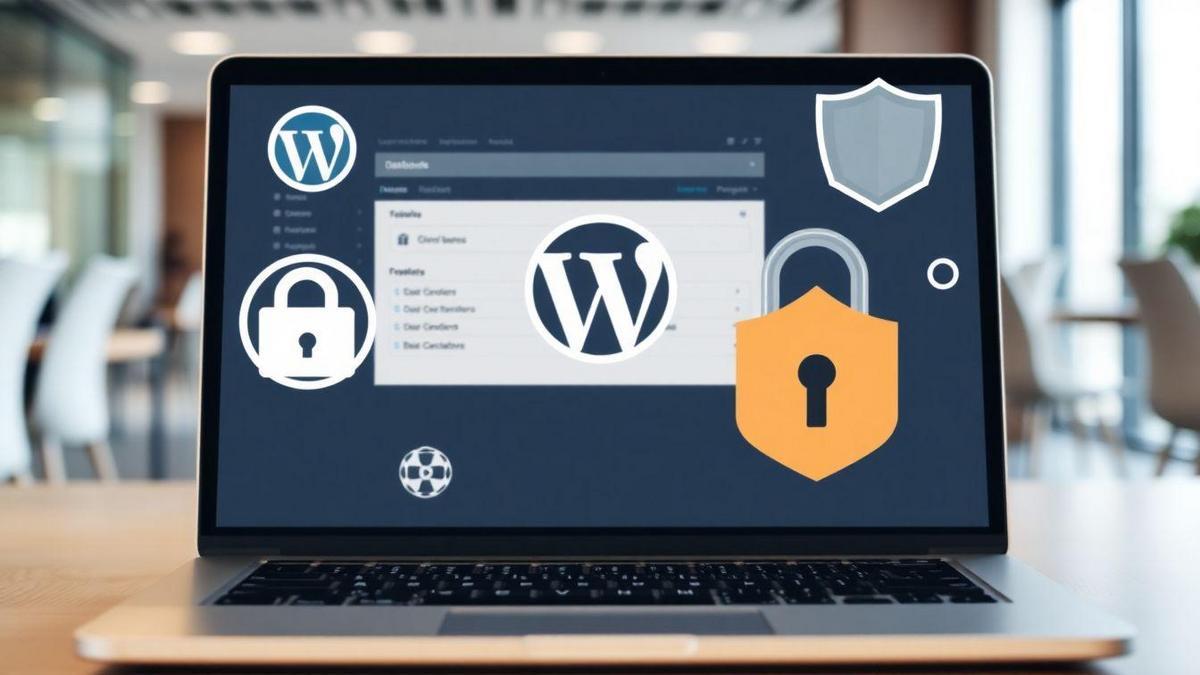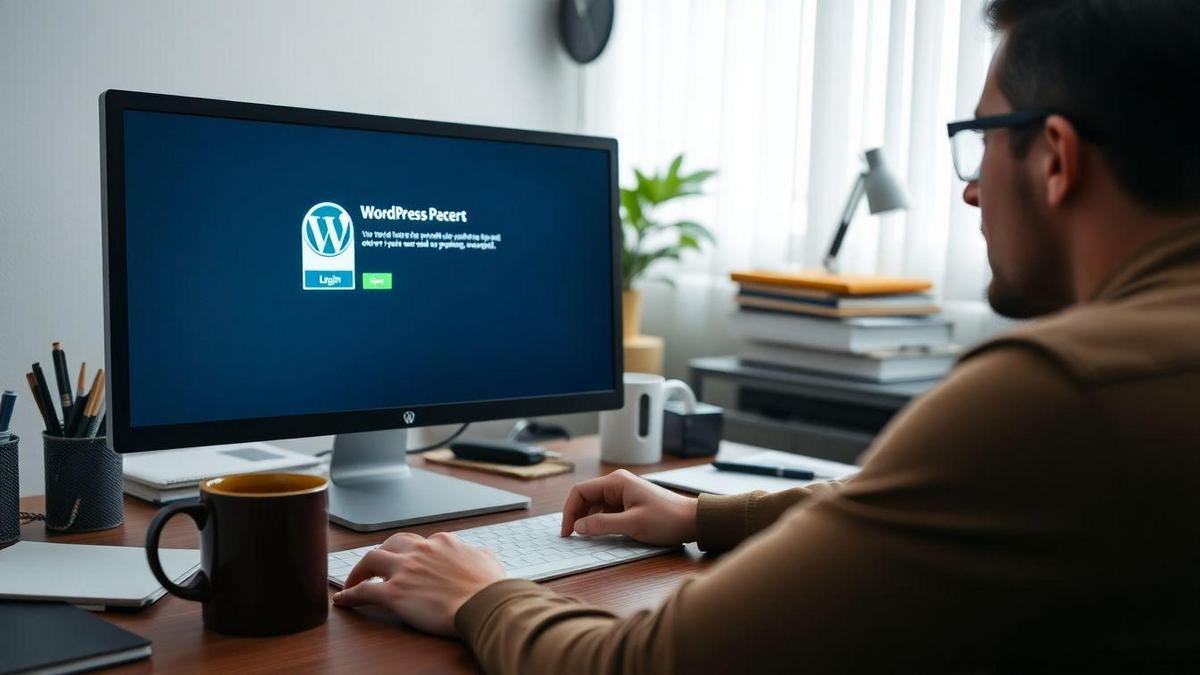Make Your Site Secure: How to Fix Login Errors in WordPress is all about tackling the annoying problems that can stop you from accessing your site. You’ll learn why errors like 403 Forbidden and 404 Not Found happen, and easy tips to solve them. We’ll also share cool tools and plugins that make your login process faster and safer. Plus, you’ll uncover why keeping your WordPress secure is super important and how small changes can make a big difference. Let’s dive in and ensure your site stays safe and sound!

Common Login Errors You Might Face
Understanding the 403 Forbidden Error
Ever tried to access a page only to be met with a 403 Forbidden message? It’s like showing up at a party and being told you can’t come in. This error means that the server understands your request but refuses to authorize it.
Common reasons for this error include:
- Incorrect file permissions
- IP address blocking
- Misconfigured settings
What Causes the 404 Not Found Error?
The 404 Not Found error is another frustrating experience. It’s like searching for a book in a library, only to find it’s not on the shelf. This error pops up when the server can’t find the page you’re looking for.
Some common culprits are:
- Mistyped URLs
- Deleted pages
- Moved content without redirects
Tips to Resolve Common Login Errors
Here are some handy tips to help you tackle these login errors head-on:
| Error Type | Solution |
|---|---|
| 403 Forbidden | Check file permissions and server settings. |
| 404 Not Found | Double-check the URL and set up redirects. |
- For the 403 error, you might want to look into your file permissions. Make sure they are set correctly. Sometimes, simply adjusting them can do the trick!
- For the 404 error, always double-check the URL you’re typing. If you moved a page, set up a redirect so visitors don’t hit that dead end.
By keeping these tips in mind, you can navigate these common login errors with ease.
How to Fix Login Errors in WordPress
Step-by-Step Guide to Troubleshoot Login Issues
Are you stuck on the login page of your WordPress site? Don’t worry; you’re not alone! Many people face login errors, but the good news is that you can fix them. Here’s a simple guide to help you out:
- Check Your Username and Password:
- Make sure you’re typing your username and password correctly.
- Look out for caps lock or extra spaces.
- Clear Your Browser Cache:
- Sometimes, your browser saves old data. Clear your cache and cookies, and try logging in again.
- Disable Plugins:
- A faulty plugin might be the culprit. Access your site via FTP or your hosting provider’s file manager.
- Rename the plugins folder to something like pluginsold. This will deactivate all plugins. Try logging in now.
- Reset Your Password:
- Click on the Lost your password? link on the login page. Follow the instructions to reset it.
- Check for .htaccess Issues:
- If you have access to your site’s files, rename the .htaccess file to .htaccessold. Then, try to log in. If it works, you can regenerate the file in the WordPress dashboard.
Using Plugins to Fix Login Errors
If the above steps didn’t do the trick, using plugins can be a lifesaver. They’re designed to help you fix login issues quickly and easily. Here’s how to get started:
- Install a Login Plugin:
- Plugins like WP Login Lockdown or WP Security Audit Log can help identify and solve login problems.
- Configure the Plugin:
- Follow the setup instructions. Most plugins are user-friendly and will guide you through the process.
- Test the Login:
- After configuring, try to log in again. If it works, you’ve successfully fixed the issue!
Recommended Plugins for Secure Login Process
Here’s a handy table of plugins that can help you maintain a secure login process:
| Plugin Name | Features |
|---|---|
| WP Login Lockdown | Limits login attempts to prevent brute force attacks. |
| WP Security Audit Log | Tracks login attempts and changes on your site. |
| Two Factor Authentication | Adds an extra layer of security to your login. |
These tools can help you make your site secure and prevent future login errors.

Importance of a Secure WordPress Site
Why Security Matters for Your Website
When you think about your website, security should be right at the top of your list. Imagine putting your heart and soul into your site, only for it to be hacked. Scary, right? A secure WordPress site helps protect your hard work from cyber threats. Without proper security, your website is like leaving your front door wide open.
How a Secure Site Protects Your Data
A secure site acts like a strong lock on your door. It protects sensitive information, like your visitors’ personal data. If your site gets hacked, not only could you lose your data, but your visitors might also feel unsafe sharing their info. Here’s how a secure site keeps everything safe:
| Protection | What It Does |
|---|---|
| SSL Certificate | Encrypts data between your site and users. |
| Firewalls | Blocks harmful traffic trying to access your site. |
| Regular Backups | Keeps copies of your site, so you can recover if needed. |
Benefits of a Secure WordPress Site
A secure WordPress site doesn’t just keep your data safe; it also builds trust with your visitors. When they see that your site is secure, they are more likely to interact with you. Here are a few benefits of having a secure site:
- Increased Trust: Visitors feel safe sharing their information.
- Better SEO: Search engines favor secure sites, helping you rank higher.
- Reduced Downtime: Fewer hacks mean less time your site is down.
In short, making your site secure is not just a good idea; it’s essential. You want to keep your data safe and your visitors happy.
WordPress Security Tips for Beginners
Simple Steps to Enhance Your Site’s Security
Keeping your WordPress site safe can feel like a big task, but it doesn’t have to be! Here are some simple steps you can take to boost your site’s security:
- Use Strong Passwords: Make your passwords hard to guess. Use a mix of letters, numbers, and symbols.
- Limit Login Attempts: This helps stop hackers from trying to guess your password.
- Install a Security Plugin: Plugins can add extra layers of protection.
These steps are like putting on a seatbelt before driving. They help keep you safe while you navigate the online world.
Regular Updates: A Key to Security
Staying updated is one of the best ways to protect your site. Think of it like getting regular check-ups to stay healthy.
Importance of Keeping WordPress Updated
When you keep WordPress updated, you get the latest security fixes. These updates patch holes that hackers might try to sneak through. Here’s a quick look at why updates matter:
| Type of Update | What It Does | Why It’s Important |
|---|---|---|
| Core Updates | Fix bugs and security issues | Keeps your site running smoothly |
| Theme Updates | Improve design and security | Makes your site look good and stay safe |
| Plugin Updates | Add new features and fix issues | Enhances functionality and protects against threats |
So, don’t skip those updates! They are crucial for keeping your site secure.

Preventing WordPress Hacks
Common Vulnerabilities to Watch Out For
When it comes to keeping your WordPress site safe, there are some common vulnerabilities you should keep an eye on. Here’s a quick list of potential weak spots:
- Outdated Plugins and Themes: If you don’t update them regularly, hackers can take advantage of security holes.
- Weak Passwords: Using simple passwords is like leaving your front door wide open. Make them strong!
- Unsecured Hosting: Your hosting provider plays a big role in your site’s security. Choose wisely!
- Lack of SSL Certificate: Without SSL, your site isn’t encrypted, making it easier for hackers to steal data.
Best Practices to Avoid Hacks
Now that you know what to watch for, let’s talk about some best practices to keep your site secure. Here’s a handy table to guide you:
| Best Practice | Description |
|---|---|
| Regular Updates | Keep WordPress, themes, and plugins up to date. |
| Strong Passwords | Use a mix of letters, numbers, and symbols. |
| Backups | Regularly back up your site in case of an attack. |
| Firewall | Install a firewall to block harmful traffic. |
How to Use Two-Factor Authentication
Two-Factor Authentication (2FA) is like having a double lock on your door. It adds an extra layer of security. Here’s how to set it up:
- Choose a 2FA Plugin: There are many options available. Look for one that suits your needs.
- Install the Plugin: Follow the instructions to add it to your WordPress site.
- Set Up Your Authentication Method: You can use an app like Google Authenticator or receive codes via SMS.
- Test It Out: Once set up, make sure everything works. Try logging in to see if 2FA prompts you for the code.
By using 2FA, you’re making it much harder for hackers to get into your site.
Understanding WordPress User Authentication
What is User Authentication in WordPress?
User authentication in WordPress is the process that verifies who you are when you log into your site. Think of it like a bouncer at a club checking IDs. When you enter your username and password, WordPress checks if those details match what it has on file. If they do, you get in; if not, you’re left out in the cold.
How Authentication Affects Your Site’s Security
Authentication plays a crucial role in keeping your site safe. If someone can easily guess or steal your login details, they can gain access to your site’s backend. This could lead to unwanted changes, data theft, or even your site being taken down. In short, strong authentication helps guard your digital home.
Here’s a simple table to show how weak vs. strong authentication impacts security:
| Authentication Type | Security Level | Risk |
|---|---|---|
| Weak (simple passwords) | Low | High chance of hacking |
| Strong (complex passwords) | High | Low chance of hacking |
Tips for Improving User Authentication
Here are some straightforward tips to boost your user authentication:
- Use Strong Passwords: Create passwords that are at least 12 characters long, mixing letters, numbers, and symbols.
- Enable Two-Factor Authentication: This adds an extra layer of security. After entering your password, you’ll need to verify your identity with a code sent to your phone.
- Limit Login Attempts: Set a limit on how many times someone can try to log in before they’re locked out. This makes it harder for hackers to guess your password.
- Regularly Update Passwords: Change your passwords every few months to keep your site secure.
By following these tips, you can make your site secure and reduce the chances of login errors in WordPress.

Login Error Solutions You Can Try
Clearing Your Browser Cache
When you face a login error, the first thing you should do is clear your browser cache. Think of your browser cache as a cluttered drawer filled with old receipts. It can slow things down and cause problems. By clearing it, you can give your browser a fresh start. Here’s how you can do it:
- Open your browser’s settings.
- Look for “Privacy” or “History.”
- Find the option to clear cache or browsing data.
- Select the time range (like the last hour or all time).
- Hit “Clear Data.”
This simple step can often solve many login problems.
Resetting Your Password Safely
If clearing the cache doesn’t do the trick, it might be time to reset your password. Here’s how you can do it safely:
- Go to the login page and click on “Forgot Password?”
- Enter your email address linked to your account.
- Check your email for a reset link.
- Follow the instructions in the email to create a new password.
Make sure your new password is strong. Use a mix of letters, numbers, and symbols. This will help keep your account safe and sound.
Additional Methods to Fix Login Issues
If you’re still stuck, don’t worry! Here are a few more methods you can try:
- Disable Browser Extensions: Sometimes, extensions can interfere with your login. Try disabling them one by one.
- Try a Different Browser: Switch to another browser to see if the issue persists. This can help determine if it’s a browser-specific problem.
- Check Your Internet Connection: Make sure you’re connected to the internet. A weak connection can lead to login failures.
| Method | Description |
|---|---|
| Clear Browser Cache | Refresh your browser by removing old data. |
| Reset Password | Create a new password to regain access. |
| Disable Browser Extensions | Turn off any extensions that might cause issues. |
| Try a Different Browser | Use another browser to see if the problem continues. |
| Check Your Internet Connection | Ensure you have a stable connection. |
Utilizing WordPress Security Plugins
Top Security Plugins for WordPress
When you’re looking to protect your WordPress site, security plugins are your best friends. Here are some top picks that can help you keep your site safe:
| Plugin Name | Key Features |
|---|---|
| Wordfence | Firewall, malware scanning, login security |
| Sucuri | Website monitoring, malware removal |
| iThemes Security | Brute force protection, file change detection |
| All In One WP Security | User account security, database backup |
Each of these plugins offers unique features that can help keep your site secure. They act like a shield, protecting your website from unwanted visitors and attacks.
How Plugins Help Fix Login Errors
Have you ever tried to log in to your site, only to be met with an error message? It can be frustrating! Luckily, security plugins can help fix these login errors. Here’s how:
- Brute Force Protection: Many plugins block repeated login attempts, which stops hackers from guessing your password.
- Two-Factor Authentication: This adds an extra layer of security by requiring a code sent to your phone.
- Password Strength Enforcement: Plugins can guide you to create stronger passwords, making it harder for others to break in.
Using these features can make your login process smoother and more secure.
Choosing the Right Security Plugin for You
Picking the right security plugin can feel a bit overwhelming. Here are some tips to help you choose:
- Assess Your Needs: What features are most important to you? Do you need malware scanning or just login protection?
- Read Reviews: See what other users have to say. Their experiences can guide you to the best choice.
- Check Compatibility: Make sure the plugin works well with your current theme and other plugins.
By taking these steps, you can find a plugin that fits your needs like a glove!

Troubleshooting WordPress Login Issues
Checking Your Site’s Error Logs
When you’re faced with login issues on your WordPress site, the first step is to check your site’s error logs. These logs can provide clues about what’s going wrong. Here’s how you can access them:
- Log in to your hosting account.
- Navigate to the File Manager or cPanel.
- Look for the Error Logs section.
Once you find the logs, scan through them for any errors related to login attempts. Common errors might include database connection issues or permission denials. If you spot something, jot it down; it can help you or your tech-savvy friend figure things out.
Disabling Plugins to Isolate Issues
Sometimes, a rogue plugin can be the culprit behind your login troubles. To check if this is the case, you can disable your plugins. Here’s a simple way to do it:
- Access your site via FTP or your hosting account’s File Manager.
- Navigate to the wp-content folder.
- Rename the plugins folder to something like plugins_old.
This action will deactivate all plugins. Try logging in again. If you get in, one of your plugins was likely causing the issue. You can rename the folder back to plugins and then reactivate them one by one to find the troublemaker.
| Action | Result |
|---|---|
| Rename plugins folder | Deactivates all plugins |
| Try logging in | If successful, a plugin is causing the issue |
| Reactivate plugins one by one | Identifies the problematic plugin |
When to Seek Professional Help
If you’ve tried the above steps and still can’t log in, it might be time to seek professional help. Sometimes the issue can be deeper than what you can fix on your own. A developer can look into your site’s code and database to find those pesky problems.
Remember, it’s okay to ask for help! Sometimes, a fresh pair of eyes can spot what we might miss.
Frequently Asked Questions
What are common login errors in WordPress?
You might see messages like “Incorrect password” or “User does not exist.” These are common errors.
How do I reset my WordPress password?
Go to your login page. Click on “Lost your password?” Follow the prompts to reset it.
Can plugins cause login errors in WordPress?
Yes, some plugins can conflict with each other. They can block your access.
How can I make my site secure against login errors?
Use strong passwords and two-factor authentication. These steps can keep hackers away.
What should I do if I still can’t log in?
Try clearing your browser cache. You can also check if your hosting provider has issues.

Lucas is a technical SEO expert who has optimized over 200 websites and managed Google AdSense and Ad Manager campaigns since 2016. At ReviewWebmaster.com, he shares strategies to boost organic traffic and monetize every single visit.
Types of articles he writes:
-
“How to Increase Your Blog’s RPM with Simple Tweaks”
-
“Technical SEO Checklist for WordPress Sites”
-
“Complete Beginner’s Guide to Google Ad Manager”
Why it works:
Lucas brings a confident, analytical, and performance-driven voice to the site — perfect for readers looking for actionable, results-oriented content.
